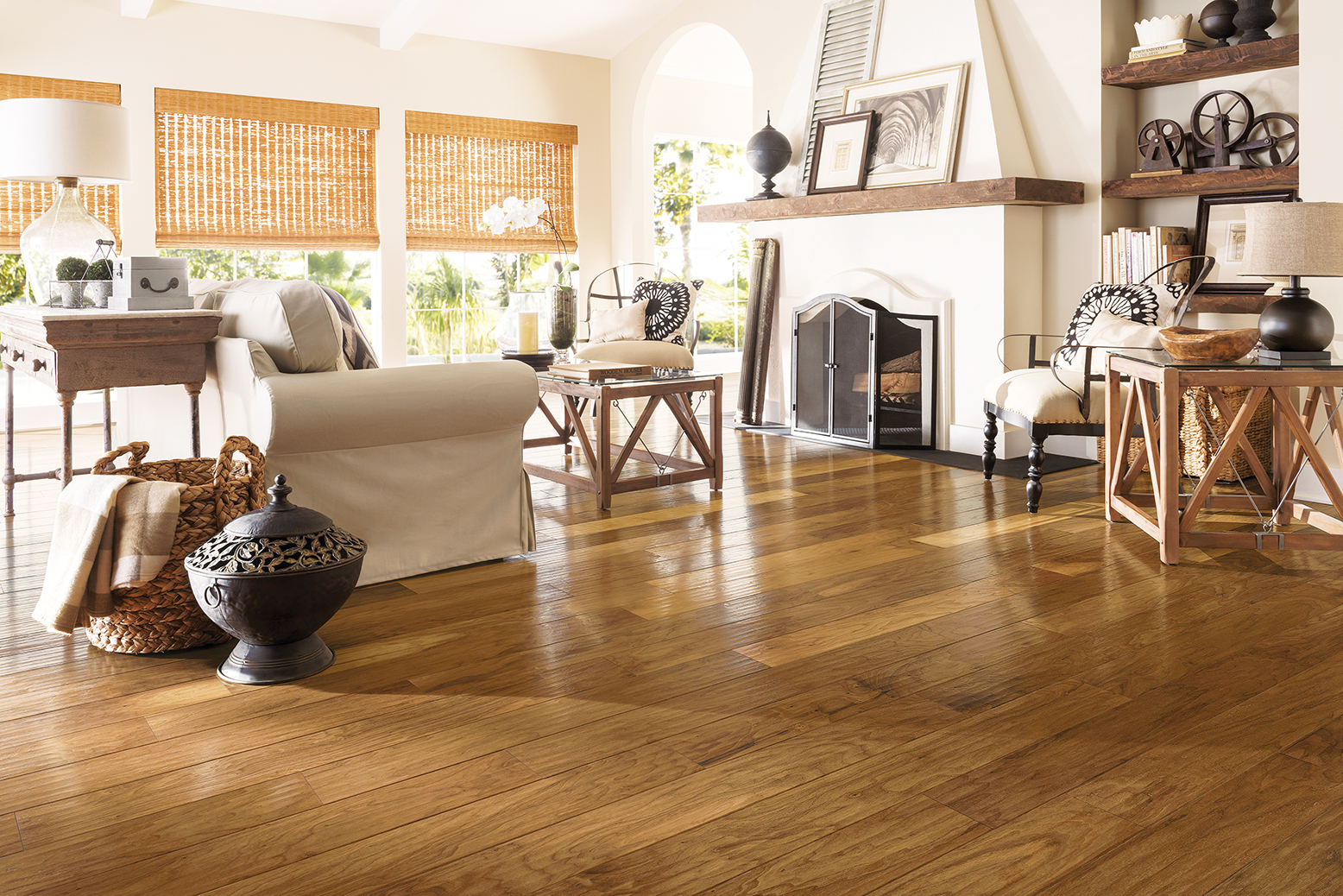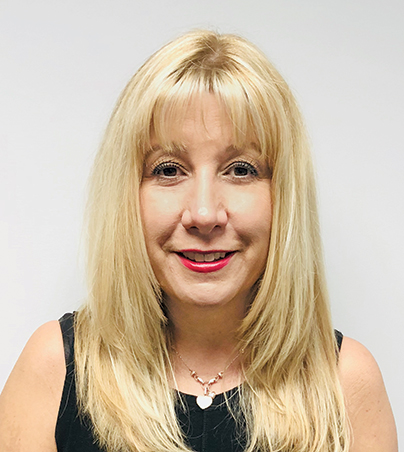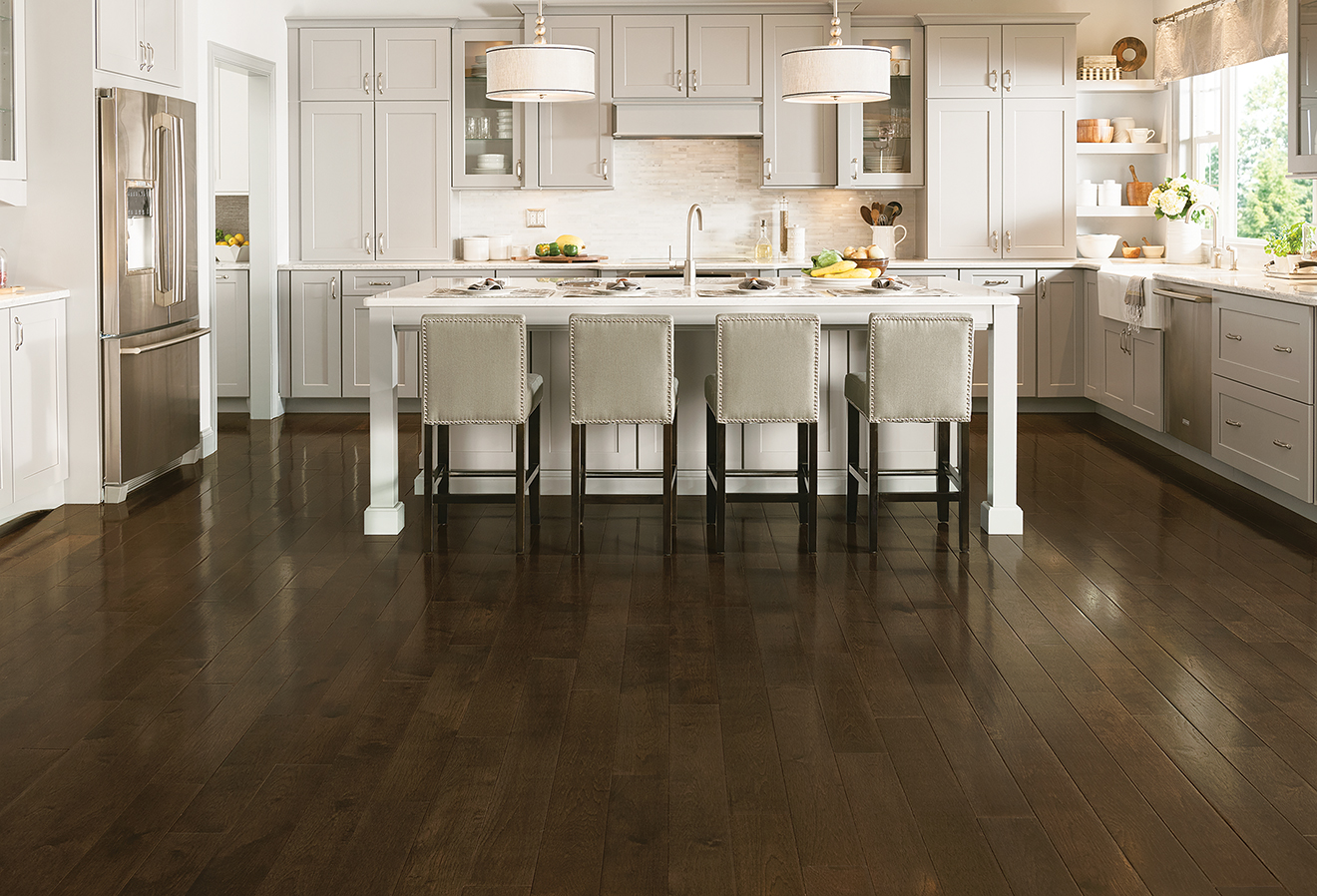Hardwood Floors That Last

American Scrape Walnut, an engineered hardwood, has a top layer of genuine walnut. The handscraped finish on these 5-inch-wide hardwood planks from Armstrong can hide dings and wear.
Avoid trends when choosing hardwood floors that will endure for a lifetime
This installment of The Carefree House reveals best practices for choosing hardwood flooring that never needs to be replaced.

Lori Vaynstein, Designer Showroom Manager
Worldwide Wholesale Floor Coverings
Edison, Fairfield and Lawrenceville, New Jersey
888-967-5340 | WorldwideFloors.com
Design NJ: When a buyer wants hardwood flooring for her forever home, what factors should she consider?
Lori Vaynstein: Prefinished flooring that has a factory finish is a gazillion times better than a floor that’s finished on-site. This prefinished flooring can be either ¾-inch-thick solid wood or engineered wood, which has a top layer of real wood. Sometimes people think engineered wood isn’t real wood, but it is. Then you need to consider where the flooring will be used. In the kitchen, go with a hard species of wood. Hardness is determined by the Janka scale. Hickory is very hard. Oak is on the harder side. Maple is hard, and American cherry is very soft. Even with a hard wood, though, if you drop a pot on it in the kitchen, it’s going to scratch and dent because it’s a natural product.
Be aware that colors can be trendy. Right now grays are in, but a homeowner might regret that choice later when it’s less popular. At the shore, a gray or blonde might be a good choice, though, because you want a beachy look and you’d be happy with it a long time. Exotic species such as Brazilian cherry and Santos mahogany, with their deep reds and oranges, are not as sought-after now as they were a decade or so ago.
If you choose a midrange brown stain, it will never go out of style. And as far as sheen, a matte or satin finish is more classic than a glossy one.
In making your selection, also think about your home’s style, whether it’s traditional or contemporary, and your lifestyle, whether it’s casual or formal, and how much traffic the floor will endure. That will help you determine the appearance you want.
For instance, oak is on the grainy side and maple has less of a grain and more of a contemporary look. Hickory has color variations that give it less formality. Hand-scraped floors were much hotter five years ago; we’re still selling them, but not as much. Distressed floors such as those with a wire-brushed finish are practical and easy to keep looking good even for a busy family with dogs. The distressing camouflages scratching, and the textured surface shows less soil. With a dark floor that is very smooth, every piece of lint will show.
The wood’s width is another consideration. A builder will typically install 2½-inch-wide flooring, but wider planks are popular. Five inches is a really nice width. We also sell 7- and 9-inch widths, but they’re more expensive and you need the right space for them—large rooms.
Ultimately you want to pick what you’ll love forever and put it down only once, because it’s a very large investment.
DNJ: Can factory-finished engineered and solid wood flooring be used everywhere?
Vaynstein: You can’t install solid wood flooring directly over a slab because it has to be nailed. Engineered wood can be installed over a slab.
DNJ: What should consumers know about grades of wood?
Vaynstein: We sell a “select” grade, which is the cleanest. Our “value” grade has more imperfections such as knots and wormholes, but sometimes that’s desirable for a rustic effect. The wear is the same, so it’s really a matter of what look the buyer wants.
DNJ: Can factory-finished flooring be refinished and repaired?
Vaynstein: Yes and yes. You might never need to refinish your floors, but if you do, engineered-wood flooring can be sanded and refinished a couple of times, depending on the thickness of the wood layer on top. Solid-wood floors can be refinished many times. As for repairs, save extra pieces of your flooring in case there’s damage from, say, moving your refrigerator. If that happens, the damaged pieces can be removed and replaced, and the floor will look new again.

Because maple isn’t very grainy, it can convey a contemporary look, says Lori Vaynstein of Worldwide Wholesale Floor Coverings of Edison, Fairfield and Lawrenceville, New Jersey. Shown is Prime Harvest, a 5-inch-wide solid maple flooring made by Armstrong, in the color Midnight Sky.
DNJ: What’s important to know about installation?
Vaynstein: Have a good installer! The installer should go to the home to check out the existing floor and the types of flooring in the surrounding areas to determine where transitions are needed. Look for a certified installer. Our installers go through Armstrong’s certification program.
Then before installation, hardwood flooring needs to be acclimated to its surroundings, to the humidity that causes it to contract and expand. We usually allow three to five days.
The bottom line is to make sure your installer isn’t just a guy driving around in a truck. You won’t be able to find him if there’s a problem. Get referrals and make sure the installer has been in business a long time, will do the job correctly and will stand behind the work. If we need to pop out boards, we’ll do that for you to keep the floor looking great. Our installation is guaranteed for a lifetime.
DNJ: Is there a preferred cleaning product?
Vaynstein: Bona® is best for wood floors. That’s all we recommend, and it’s available just about everywhere—in hardware stores, Home Depot, Walmart. You can use it every day.
Freelance writer Mary Vinnedge loves engineered-wood floors of distressed oak. They are rugged, easy-to-clean, slow to show dirt and fit her casual lifestyle.
